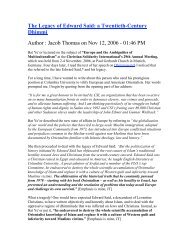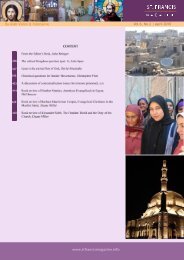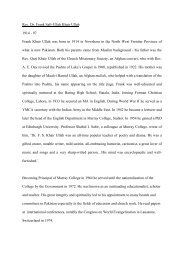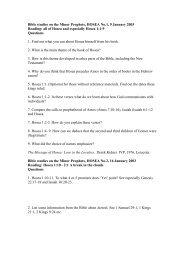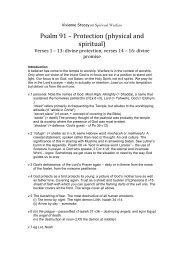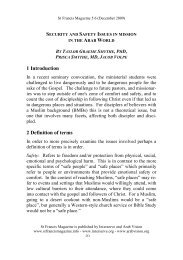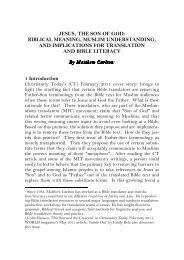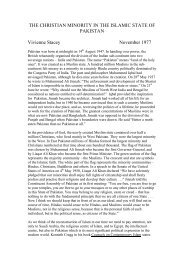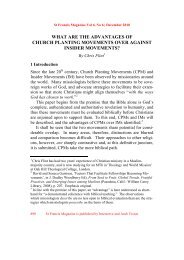Untitled - St.Francis Magazine
Untitled - St.Francis Magazine
Untitled - St.Francis Magazine
You also want an ePaper? Increase the reach of your titles
YUMPU automatically turns print PDFs into web optimized ePapers that Google loves.
<strong>St</strong> <strong>Francis</strong> <strong>Magazine</strong> Vol 8, No 2 | April 2012 equivalence model for the translation of the “Son of God” term appear to prefer formal correspondence as the translation model. 37 What they may not realize is that functional equivalence has been the dominant theoretical paradigm in Bible translation for years. In addition, the Bible agencies require translations to use “terms that accurately express the familial relationship by which God has chosen to describe Himself as Father in relationship to the Son in the original languages;” and to “include an explanation of the meaning of the phrase ho huios tou theou (the Son of God) when it refers to Jesus Christ.” 38 This requirement ensures that the literal form and the meaning of the phrase are stated and clarified in the introductions, glossary, and notes. Second, this assumption that the phrase “son of God” attributed deity to its subject in the original language is not fully cognizant of the biblical data. It appears that the Gospel writers, even though they knew that Jesus was God the Son, did not share this non-‐contextual understanding of the term “Son of God.” The way the term is used in the Gospels, appears to have meant something different to them. If this is true, what did the term mean to the Gospel writers, as well as to the earliest churches, and how did they conceptualize and speak of the deity of Jesus? 39 37 Formal correspondence refers to a word for word or form for form translation. The weakness of formal correspondence is that languages use different forms to express meaning, so a formal correspondent can impair meaning or convey a wrong meaning. For a brief examination of the complexity of the transmission of meaning in translation, see Donna Toulmin’s article: When ‘Literal’ is Inaccurate (2011). 38 From the Wycliffe USA translation standards at www.wycliffe.org/Translation<strong>St</strong>andards.aspx. See SIL’s stated policy on this at: http://www.sil.org/translation/divine_familial_terms.htm. 39 Richard Bauckham asserts that “the intention of New Testament Christology, throughout the texts, is to include Jesus in the unique divine identity as Jewish Monotheism understood it…They include Jesus in the unique sovereignty over 189


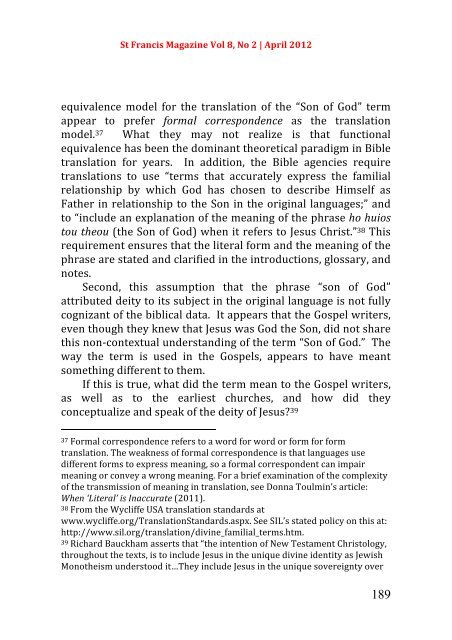

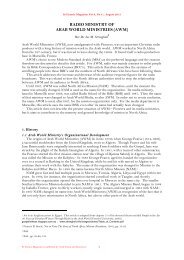
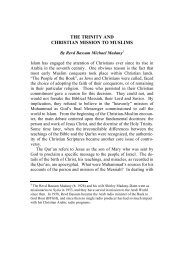
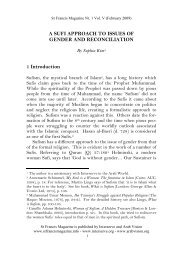
![Reflections on Surah Fatiha and the Lord's Prayer[1] - St.Francis ...](https://img.yumpu.com/49377951/1/184x260/reflections-on-surah-fatiha-and-the-lords-prayer1-stfrancis-.jpg?quality=85)
